Disclosure: This article contains affiliate links. We may earn a commission from purchases at no extra cost to you, which helps our travel content.
The first time I stood atop Mount Sentinel overlooking Missoula, my nurse's instinct to monitor vital signs kicked in – but it was my own heart racing from the panoramic beauty that caught my attention. Having spent countless nights observing stars during hospital breaks, finding this perfect combination of accessible trails, dark skies, and diverse ecosystems felt like discovering medicine for the soul. As someone who's hiked everywhere from Patagonia to the Australian Outback, I can confidently say Missoula's mountains offer something truly special for families seeking both adventure and educational opportunities in nature.
Day 1-2: Acclimating with Beginner-Friendly Trails
When traveling with kids or those new to mountain terrain, I've learned that a gradual introduction prevents both physical and emotional meltdowns. Begin your Missoula adventure with the 'M' Trail on Mount Sentinel – a 3/4 mile switchback path with 620 feet of elevation gain that rewards hikers with expansive valley views. The geological formations visible from this vantage point tell a 12,000-year story of ancient Lake Missoula.
On day two, venture to Greenough Park, a 42-acre urban sanctuary along Rattlesnake Creek with flat, shaded trails perfect for observing riparian ecosystems. I've spent hours here with my daughter identifying native plants and watching osprey dive for trout. These gentle introductions allow your body to adjust while building confidence for more challenging hikes.
Before heading out, I always prepare a small day pack with essentials. My hydration reservoir has been indispensable for keeping everyone hydrated without constant water bottle refills. For families with younger children, I recommend packing a field microscope to transform an ordinary hike into a scientific expedition by examining leaf structures and insect life up close.

💡 Pro Tips
- Start early morning (before 9am) to avoid afternoon thunderstorms common in summer
- The 'M' Trail has benches at switchbacks – perfect rest spots for discussing the valley's formation with kids
- Greenough Park has restrooms and picnic areas, making it ideal for a packed lunch break
Day 3-4: Intermediate Adventures in the Rattlesnake National Recreation Area
The Rattlesnake National Recreation Area offers the perfect progression in difficulty while showcasing some of Montana's most diverse ecosystems. Begin with the Main Rattlesnake Trail to Stuart Peak – you don't need to complete the entire 16-mile round trip to experience its beauty. The first 4 miles provide spectacular creek crossings, dense pine forests, and occasional wildlife sightings including white-tailed deer and black bears.
During my last visit, we hiked to Strawberry Lake (a 7-mile round trip) and witnessed three distinct weather systems collide above the ridge – a meteorological spectacle that had my weather-enthusiast heart racing. The trail gains elevation gradually, making it manageable for older children and adults with moderate fitness levels.
For day four, I recommend the Ch-paa-qn Peak Trail (formerly known as Squaw Peak). This 8-mile round trip with 2,100 feet of elevation gain offers subalpine meadows bursting with wildflowers in July and August. The 360-degree summit views extend to the Bitterroot Mountains and Mission Range – perfect for teaching kids about mountain formation and identifying distant peaks.
Safety becomes increasingly important at these elevations. My satellite messenger provides peace of mind when cell service disappears. And after years of trial and error, I've found nothing beats a quality pair of trekking poles for maintaining stability on steeper sections while reducing knee strain on descents.

💡 Pro Tips
- Check trail conditions at the Rattlesnake Recreation Area trailhead – stream crossings can be high in early summer
- Pack layers! Temperature variations of 20+ degrees are common between valley floor and higher elevations
- Bring bear spray and know how to use it – black bears are common in the Rattlesnake area
Day 5-6: Advanced Trails and Alpine Experiences
For experienced hikers seeking greater challenges, days five and six elevate both the difficulty and the rewards. The Blodgett Canyon Overlook Trail in the Bitterroot Mountains (about 45 minutes from Missoula) offers a moderately challenging 3-mile round trip hike with breathtaking views of a glacially carved canyon that rivals Yosemite in grandeur. The trail's exposure and steeper sections demand proper footwear and attention to footing.
As a nurse who's treated countless blisters and ankle injuries, I can't emphasize enough the importance of proper footwear. After trying numerous brands, my hiking boots have proven themselves on everything from scree fields to wet granite slabs.
Day six brings the crown jewel: Lolo Peak. This challenging 14-mile round trip with 3,800 feet of elevation gain takes you through multiple ecological zones to an alpine summit offering views into Idaho and across much of western Montana. The trail passes Carlton Lake, providing a perfect lunch spot and swimming opportunity (though be prepared for bracingly cold water).
The meteorological patterns visible from Lolo Peak are fascinating – you can often see weather systems developing and moving through different valleys simultaneously. During my last summit, we witnessed three distinct thunderstorms tracking across different regions while standing in perfect sunshine – a powerful reminder of mountain weather's localized nature.

💡 Pro Tips
- Start Lolo Peak hikes no later than 7am to avoid afternoon thunderstorms and ensure adequate return time
- The final approach to Lolo Peak involves some route-finding – download offline maps before your hike
- Pack microspikes even in summer – snow patches can persist on north-facing aspects into July
Day 7: Recovery and Stargazing at Blue Mountain Observatory
After six days of progressive hiking, I always recommend a gentler finale that combines light activity with one of Missoula's hidden treasures – its dark skies. The Blue Mountain Nature Trail offers an easy 1.5-mile loop perfect for tired legs while still delivering beautiful forest immersion and wildlife viewing opportunities.
But the real magic happens after sunset. Blue Mountain Observatory, operated by the University of Montana, sits at 6,300 feet and offers public stargazing events throughout summer (check their schedule in advance). As someone who's found solace in the night sky during countless hospital night shifts, I can attest that few experiences compare to seeing Saturn's rings or Jupiter's moons through a quality telescope while an astronomer explains what you're viewing.
The plateau location provides exceptional viewing conditions away from city light pollution. I've witnessed meteor showers, tracked satellites, and identified constellations from this vantage point that have left both adults and children speechless with wonder.
For nighttime comfort, I never visit without my rechargeable headlamp which features a red light mode that preserves night vision. And since mountain evenings get chilly even in summer, my packable down blanket has created countless cozy stargazing setups while adding minimal weight to my pack.

💡 Pro Tips
- Bring binoculars even if attending an observatory event – they're perfect for scanning the Milky Way while waiting for telescope turns
- Temperatures drop rapidly after sunset – pack extra layers beyond what daytime temperatures suggest
- Download a star chart app to your phone for self-guided constellation identification
Final Thoughts
Missoula's mountain trails have offered my family not just physical challenges, but living laboratories where weather patterns, geological forces, and celestial wonders become tangible educational experiences. What makes this region truly special is its accessibility – within a single week, hikers of all abilities can progress from gentle nature walks to challenging alpine summits, all while experiencing Montana's legendary big sky and pristine wilderness.
As both a healthcare professional and father, I've found few destinations that combine physical wellness opportunities with mental rejuvenation so perfectly. The gradual progression outlined in this itinerary allows families to build confidence while creating memories that transcend typical vacations. Whether you're identifying constellations from Blue Mountain Observatory or watching thunderheads build over distant peaks, Missoula's mountains offer constant reminders that we're part of something much larger than ourselves.
I encourage you to use this guide as a framework rather than a rigid schedule – allow weather conditions, energy levels, and unexpected discoveries to shape your journey. The mountains have been here for millions of years; they invite us to slow down and experience them on their terms, with curious minds and open hearts.
✨ Key Takeaways
- Start with easier trails and progressively build to more challenging hikes to prevent injuries and build confidence
- Missoula offers exceptional educational opportunities combining geology, meteorology, and astronomy in one destination
- Summer afternoons frequently bring thunderstorms – plan morning hikes and monitor weather patterns carefully
- The combination of mountain trails and dark sky viewing makes Missoula ideal for families seeking both adventure and educational experiences
📋 Practical Information
Best Time to Visit
Mid-June through mid-September
Budget Estimate
$1,200-1,800 for a family of four for one week (excluding flights)
Recommended Duration
7 days minimum, 10 days ideal
Difficulty Level
Progressive From Easy To Challenging
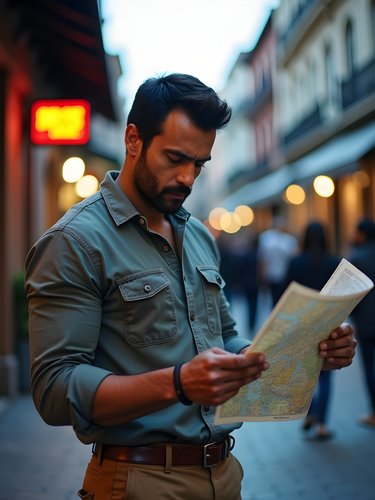







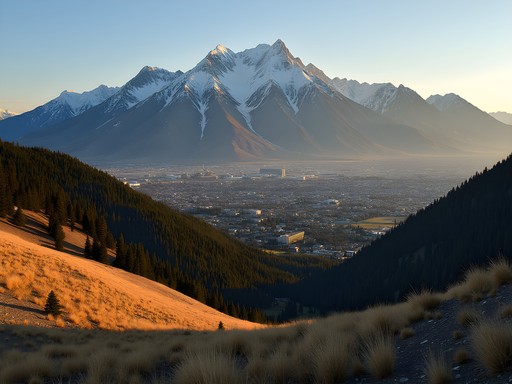

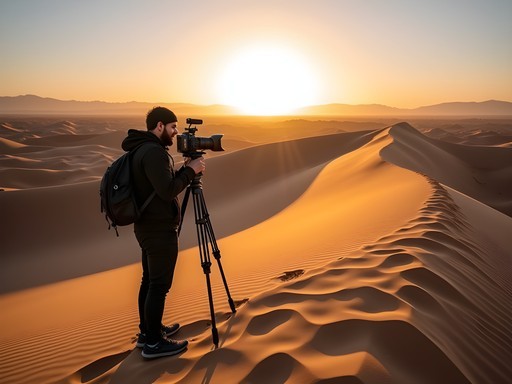
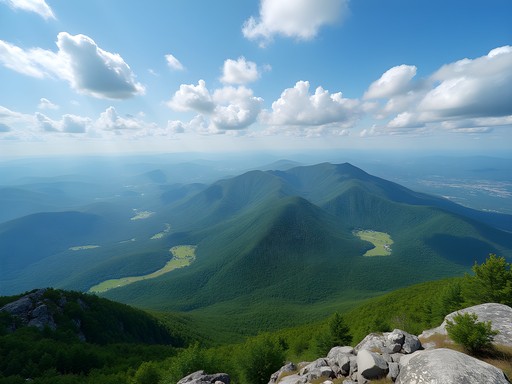


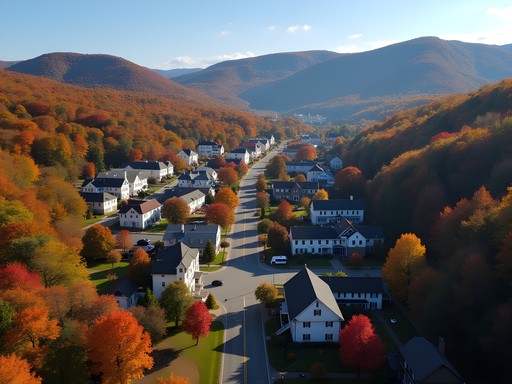
Comments
wanderlustrider
Just got back from Missoula and used this guide for our hiking trip - it was spot on! The progression from easier to harder trails worked perfectly for getting our legs acclimated. That said, we underestimated the Ch-paa-qn Peak hike (Day 5). Those switchbacks are no joke! The alpine meadows were worth it though - wildflowers everywhere. We also added the Crazy Canyon Trail which wasn't in your guide but connected nicely with Day 2. One thing to note: we saw a black bear on the Rattlesnake trails, so definitely carry bear spray folks! Thanks for putting this together Nathan, made our trip so much easier to plan.
hikingmaster
Thanks for the bear tip! Did you need microspikes in any areas? I'm going in November.
wanderlustrider
In November you'll definitely want microspikes for the higher elevation trails. Stuart Peak and Ch-paa-qn will likely have snow by then. The valley trails should be fine though!
photoguide
Great post! Any specific spots along these trails that are particularly good for photography? I'm heading to Missoula in October and want to catch some fall colors.
Nathan Sanchez
October is perfect for fall colors! The overlook on the Rattlesnake Creek Trail (Day 3) has amazing valley views with golden aspens. Also, Stuart Peak (Day 6) if you're up for the challenge - the alpine larches turn bright yellow in October. Bring extra batteries, it gets cold up there!
photoguide
Thanks so much! Will definitely check out those spots. Can't wait!
Frank Garcia
Having just returned from Missoula, I'd add that your day-by-day breakdown hits the sweet spot for acclimatization. Many visitors underestimate the elevation adjustment needed. For those following this itinerary: the water sources on Rattlesnake trails were reliable in May, but bring filtration. I tracked the trails on AllTrails and found the distances slightly longer than advertised (+0.5-0.8 miles typically). The progression from Mount Sentinel to Ch-paa-qn Peak gives a perfect elevation training ladder. Nathan - did you consider including the Pattee Canyon trails? They seemed less crowded during my visit.
Nathan Sanchez
Great point about the distances, Frank! I've found the same thing. Pattee Canyon was actually on my original draft but I cut it for length. Those trails are indeed a hidden gem with much smaller crowds. Maybe material for a follow-up post!
Megan Martin
Nathan, I really appreciate how you've broken down this guide by difficulty levels. I was in Missoula last year for a conference and managed to squeeze in the Mount Sentinel hike. That view of the valley is absolutely worth every step! I wish I'd had your guide then - would have loved to explore the Rattlesnake area. One tip for your readers: the weather can change quickly in those mountains, especially in fall. I always carry my packable rain jacket even on clear days. Looking forward to returning and tackling some of your advanced recommendations!
hikingmaster
Wow, this guide is exactly what I needed! Planning a trip to Missoula next month and was feeling overwhelmed by all the trail options.
Nathan Sanchez
Glad it helps! Let me know if you have any specific questions about the trails.
hikingmaster
Actually, yes! How difficult is the Blue Mountain Observatory hike? My knees aren't what they used to be.
Nathan Sanchez
The observatory trail is moderate - about 1.5 miles each way with 700ft elevation gain. There are plenty of places to rest if needed. If that sounds too much, the Pattee Canyon trails (Day 1) are much gentler on the knees!
Marco Flores
Nathan, your nurse's perspective on hiking is refreshing! I just returned from Missoula last week and followed a similar path to your Day 3-4 recommendations. The Rattlesnake area was magical - we spotted two moose at Stuart Peak! One tip for others: the creek crossings were higher than expected even in late season. Some good waterproof hiking boots are essential. The local brewery scene was the perfect complement to days on the trail - Kettlehouse Brewing's Cold Smoke Scotch Ale became our post-hike tradition!
Nathan Sanchez
Moose sightings! You got lucky, Marco! And yes, Kettlehouse is my go-to as well after a long day on the trails. Did you make it to the Blue Mountain area at all?
Marco Flores
We did! Blue Mountain was our last day too - though we missed the observatory timing. Next time for sure!
moonmaster
That stargazing recommendation at Blue Mountain Observatory is spot on! My partner and I did this last summer after a week of hiking and it was the perfect finale. We brought our compact binoculars which were amazing for both daytime wildlife spotting on trails and nighttime star viewing. The volunteers at the observatory were super knowledgeable too. Definitely don't skip this part of Nathan's itinerary!
tripmood
Just did the Mount Sentinel M trail last month with my kids (8 and 10) and it was perfect for them! We took plenty of breaks and made it a game to spot different plants along the way. The view at the top was absolutely worth it. Planning to try some of your Day 3 recommendations next time. Do you think the Rattlesnake trails would be too challenging for kids who handled Mount Sentinel okay?
Nathan Sanchez
The lower Rattlesnake trails would be perfect for your kids! Try Stuart Peak Trail but just go as far as the first creek crossing (about 2 miles in). It's shaded and beautiful without too much elevation gain.
islandadventurer
Great guide Nathan! I'm curious about the best season to tackle those advanced trails you mentioned for Day 5-6. Would late October still be viable or too risky with weather?
Nathan Sanchez
October can be tricky - you might get perfect fall colors or early snow. I'd say plan for the advanced trails but have backup options. The Ch-paa-qn Peak especially gets snowy earlier than you'd expect!
islandadventurer
Thanks for the quick response! I'll definitely prepare for both scenarios.
journeylegend6428
Just what I needed! Planning my first hiking trip to Missoula next spring!
Venture X
Premium card with 2X miles, $300 travel credit, Priority Pass